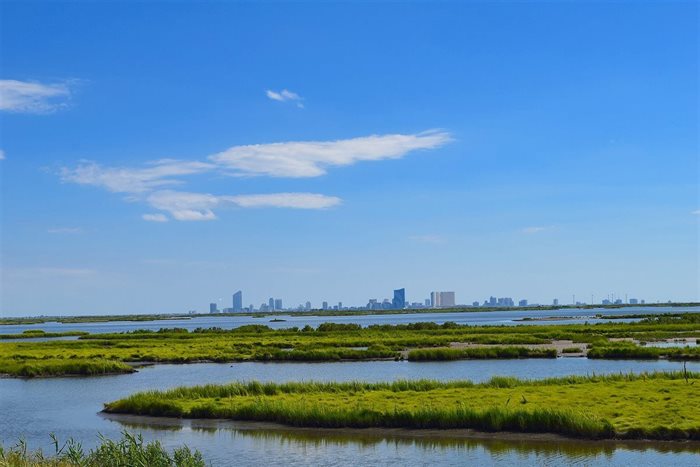






“Blue carbon”, the term used to describe CO₂ absorbed by marine ecosystems, was an important topic of discussion at last year’s COP27 talks in Egypt.
More countries are bringing blue carbon into their climate change plans and policies. Indonesia, for example, has made climate adaptation and mitigation efforts that focus on blue carbon a key component for achieving its Nationally Determined Contributions target by 2030.
But, partly because of gaps in scientific knowledge, countries may not know how much potential blue carbon they have or where it is located. There are also ecological, social and economic aspects to consider. These differ from place to place, so (although guidelines exist and countries can learn from each other) a “one size fits all” approach isn’t useful.
South Africa is globally recognised for its marine heritage. Its marine ecosystems are not only beautiful and diverse: they also bring economic and social benefits through job creation and contributing to food security. This makes it an imperative to implement targeted climate change policies for marine and coastal ecosystems – and to centre blue carbon in these plans.
Our recent study was the first national blue carbon sink assessment for South Africa. It offers a comprehensive estimate of blue carbon storage across the country. That’s an important element in supporting the development of evidence-based blue carbon strategies.
While national blue carbon stocks are naturally limited by the distribution of mangroves, salt marshes and seagrasses; South Africa does have existing policies that can be used to protect and restore these ecosystems.
Mangroves, salt marshes and seagrasses are the definitive blue carbon ecosystems. Unlike forests, or other terrestrial ecosystems, more than 90% of the carbon is locked into the soil rather than in the plants themselves. The soils of blue carbon ecosystems are waterlogged with salty seawater. This prevents the stored organic carbon from being converted back to CO₂ through remineralisation. If left undisturbed and subject to certain conditions, these carbon stocks can build up over centuries.
In total, we found that blue carbon ecosystems in South Africa cover a relatively small area of around 18,500 hectares. That represents only 0.015% of the total land area. This is because mangroves, salt marshes and seagrasses can only occur in estuaries with certain environmental conditions, making their distribution quite limited.
Next, we needed to calculate how much CO₂ these blue carbon ecosystems hold. To do so, we collated the information about where mangroves, salt marshes and seagrasses occur with the available data from studies that have measured carbon stocks.
Using guidelines developed by the UN’s Intergovernmental Panel on Climate Change, we also estimated CO₂ emissions from blue carbon ecosystems for the period from 1930 to 2020. These emissions are linked to certain human activities. For example, if a salt marsh is completely removed and replaced with hard infrastructure, it is assumed that all the carbon it stored has been lost and converted back into CO₂.
However, if some of the natural area remains, then only a portion of the carbon stock has been lost, particularly if the soil is still intact, as this is where most of the carbon is stored.
We estimated that total ecosystem carbon stocks per unit area (in megagrams of carbon per hectare) range from 253-534 Mg C ha⁻¹ for mangroves to 100-199 Mg C ha⁻¹ for salt marshes and 45-144 Mg C ha⁻¹ for seagrasses. This is more than the top three vegetated natural terrestrial ecosystems in South Africa: indigenous forest, grasslands and thicket.
We also found that 26%, or about 6,500 hectares, of the historical extent of blue carbon ecosystems has been lost through human activities. This has led to historical emissions on average of 30,266 tonnes of CO₂ per year. For comparison, the CO₂ emissions per passenger on a flight from Johannesburg to Durban is estimated at 0.0736 tonnes of CO₂ per year: one person would need to make the trip about 400,000 times in a year to equal the emissions lost from blue carbon ecosystems.
Some of the degraded blue carbon ecosystems could be restored. Done successfully, this could increase the total annual carbon sequestration of blue carbon ecosystems by 18%.
Our findings offer important information about South Africa’s blue carbon ecosystems. Protecting and managing these ecosystems, we argue, needs to be integrated into coastal management practices, biodiversity conservation, national and provincial climate adaptation strategies, and blue economy planning.
This won’t require new laws. South Africa has a number of existing policies and measures that can be used to reach these goals. But it will require a concerted effort across all spheres of government (local, provincial, and national) to prioritise and mainstream blue carbon ecosystem protection and sustainable use.
Our study identified principal climate change mitigation opportunities with co-benefits for adaptation and biodiversity conservation. These include conservation and rehabilitation activities that can be used under Article 6 of the Paris Agreement under marked based approaches to service agriculture, forestry and other land use sectoral targets of the climate change mitigation system for South Africa.
This article is republished from The Conversation under a Creative Commons license. Read the original article.![]()

The Conversation Africa is an independent source of news and views from the academic and research community. Its aim is to promote better understanding of current affairs and complex issues, and allow for a better quality of public discourse and conversation.
Go to: https://theconversation.com/africa